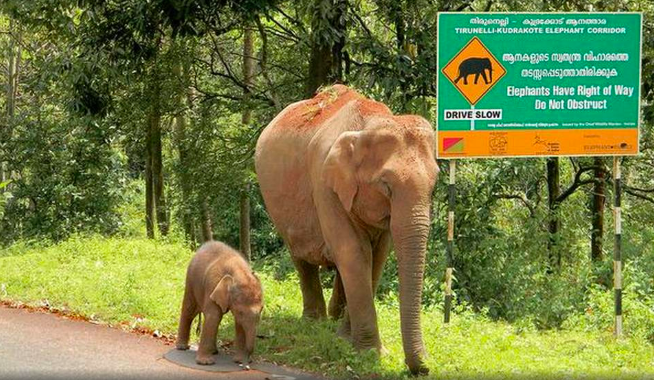
By Beth Allgood, U.S. Country Director, International Fund for Animal Welfare
The plight of endangered wildlife has been brought sharply into focus in recent months by an alarming report from some of the world’s most renowned scientists warning that nature is in rapid decline globally with the rate of extinction accelerating beyond levels previously imagined. Without question, this does not bode well for humans. According to the Intergovernmental Science-Policy Platform on Biodiversity and Ecosystem Services (IPBES), “The health of ecosystems on which we and all other species depend is deteriorating more rapidly than ever. We are eroding the very foundations of our economies, livelihoods, food security, health and quality of life worldwide.”
Some of the obvious solutions to this problem – creating more parks through ‘fortress conservation’ to protect habitat and restricting some activities on privately-owned lands – may be first steps, but these alone cannot reverse biodiversity loss. Just like people, many of the most majestic and endangered wildlife needs room to roam, unable to thrive if corralled by residential developments or other man-made obstacles including roads, walls, or other impediments. Protected areas are often fragmented and far apart – like islands separated by impassable seas of development.
To effectively protect and support global biodiversity, we must ensure that protected areas are not isolated from one another. And one way to achieve that is to help connect protected areas of critical wildlife habitat by creating ‘wildlife corridors.’ With their migration pathways protected, wildlife is able to move more freely, appropriately, and safely, across landscapes and marinescapes to meet their basic needs including food, water, reproduction, and social structure.
At IFAW, we are working with communities around the globe to ensure such wildlife corridors for some of the world’s most critically endangered species. In India, for example, we began working in 2005 with local partners to identify key wildlife corridors needed for Indian elephants, whose total population had shrunk to less than 28,000 in 2017. Although total elephant reserves across India cover approximately 65,000 kilometers squared, loss and degradation of the migratory corridors were causing a significant increase in the incidents of human-elephant conflict. Today, IFAW’s work has helped grow the number of critical wildlife corridors to 101, reducing the loss of elephants and the overall incidents of human-animal conflict.
These corridors are unique in that they not only help provide safe passage for the animals, but they actually facilitate their protection when they cross international borders. In Malawi and Zambia, IFAW has worked since 2015 with wildlife management in both countries to improve law enforcement focused on a transboundary landscape conservation area that covers Kasungu National Park in Malawi, as well as Lukusuzi and Luambe National Parks in Zambia. If elephant poachers cross the border while fleeing rangers from Malawi, rangers from Zambia are prepared and awaiting them on the other side, and vice versa.
Unbeknownst to many, the work on wildlife corridors extends into the ocean as well. The Bay of Bengal, just northeast of Sri Lanka, is home to one of the world’s busiest shipping lanes, which currently sit directly over a critical feeding area for blue whales. If that lane were pushed south by approximately 15 miles, over time, hundreds of blue whales would be saved – and trade would continue as effectively as before. IFAW is working to make this a reality. Partnering with scientists, shippers, mariners, local whale watch operators, and others, we’re making an effort to persuade Sri Lanka’s authorities to modify these routes and ensure coexistence.
Closer to home, we need the same kind of ocean corridors to protect North Atlantic right whales. For hundreds of years, the North Atlantic right whale has inhabited waters from New England and Canada to the coasts of Georgia and Florida, areas heavy with both shipping traffic and commercial fishing which have introduced lethal threats to the whales as a result of unintentional ship strikes and chronic entanglements in fishing gear. Once numbering in the hundreds of thousands, the population was most recently estimated to number just 411 individuals. With eight deaths already confirmed so far in 2019, IFAW is actively urging the U.S. and Canadian governments as well as other stakeholders to take immediate action to protect right whales and to preserve their habitat. We know this iconic marine mammal is at a tipping point and the population will not recover without serious intervention. We’ve so far succeeded in securing and maintaining reasonable ship speed limits in critical areas and worked with mariners to increase their awareness of whales in shipping lanes. Now, we’re working to provide focused government and private funding to encourage alternative fishing gear to reduce the threat of deadly entanglements while maintaining sustainable fisheries and industry.
Currently, there is a bipartisan bill to protect wildlife corridors throughout the United States and despite the deep partisan divides, it is working its way through the corridors of Congress towards passage. If passed, it would establish a system of wildlife corridors on Federal lands as well as waterways, support Native American tribes who are creating such corridors on their lands, and provide funding for efforts on state, local, and voluntary private lands that will ultimately be a win for all species. By supporting the establishment and preservation of these safe corridors between protected spaces across the nation, the Act would promote species survival, which in turn would benefit humans.
In order to survive and thrive, we need healthy ecosystems – of which native species are an integral part. We have a ways to go when it comes to the protection of species throughout their range, but there are signs of progress that wildlife will have the room needed to roam. By protecting habitats, ensuring safe passage, and helping endangered wildlife to flourish—we can save other species. And ultimately our own.

July 27, 2019 » ecosystems, elephants, endangered species, habitat, protected areas, wildlife corridors

